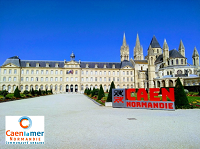Orateur
Description
The emission of the pre-equilibrium particles during nuclear collisions at moderate beam energies is still an open question. This influences the properties of the compound nucleus but also changes the interpretation of the quasi-fission process. A systematic analysis of the data obtained by the FAZIA collaboration during a recent experiment with a neutron rich projectile is presented. The full range of charged particles detected in the experiment is within the limit of isotopic resolution of the FAZIA detector. Quasi-projectile (QP) fragments were detected in majority thanks to the forward angular acceptance of the experimental setup which was confirmed by introducing cuts based on the HIPSE event generator calculations. The main goal was to compare the experimental results with the HIPSE simulations after introducing these cuts to investigate the influence of the n-rich entrance channel on the QP fragment properties. More specifically, the lowering of N/Z of QP fragments with beam energy was found to be present since the initial phase of the reaction. Thus, pre-equilibrium emissions might be a possible candidate to explain such an effect.

